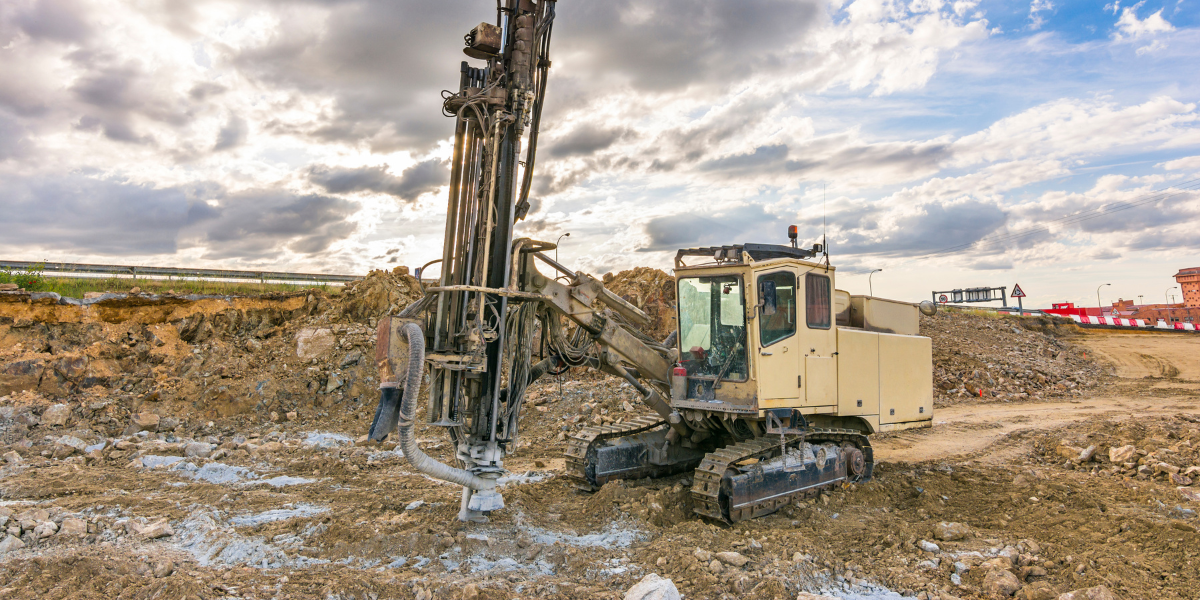Specialized Geotechnical Works for Lasting Construction Solutions
Wiki Article
A Thorough Exam of the Providers Given by Consulting Engineers in the Area of Geotechnical Engineering: From Website Investigation to Project Execution
Consulting engineers in geotechnical engineering play a pivotal duty in the successful execution of construction tasks, starting with extensive website investigations that disclose critical subsurface conditions. Their knowledge expands to dirt property assessments, environmental influence examinations, and the cautious monitoring of job implementation, ensuring alignment with safety and sustainability standards.Relevance of Geotechnical Engineering
Geotechnical engineering is a crucial technique that underpins the security and sustainability of civil framework tasks. By understanding the mechanical actions of dirt and rock materials, geotechnical engineers assess the viability of websites for different constructions, including buildings, bridges, and dams. This basic analysis makes sure that frameworks can withstand environmental factors and tons without experiencing failure.The value of geotechnical design prolongs past mere structural safety and security; it additionally incorporates ecological stewardship. Correct geotechnical assessments contribute to decreasing the eco-friendly impact of construction. With careful analysis of dirt residential properties and groundwater conditions, engineers can create structures and preserving structures that minimize threats such as erosion and landslides, promoting long-lasting security.
Additionally, geotechnical design plays a vital duty in job cost monitoring. geotechnical works. By identifying potential concerns early in the layout stage, engineers can suggest appropriate options, therefore preventing pricey delays and redesigns throughout construction. This positive method not just enhances job performance yet also considerably lowers dangers connected with unexpected site conditions
Website Investigation Methods
Reliable website investigation strategies are essential for collecting precise information regarding subsurface problems before building and construction. These strategies help with the understanding of the geological and hydrological environment, which is vital for ensuring the stability and safety and security of suggested frameworks.Typical approaches employed in site investigations consist of borehole drilling, which enables designers to remove soil samples at various depths, supplying insights into stratification and material types. In enhancement, geophysical studies, such as seismic refraction and electrical resistivity, offer non-invasive ways to examine subsurface attributes over larger locations. These methods can aid identify abnormalities without extensive excavation.
Test pits are another valuable technique, supplying direct monitoring of dirt layers and allowing in-situ testing. geotechnical works. This technique is specifically helpful for superficial excavations and can aid examine groundwater levels. Cone infiltration examinations (CPT) are increasingly made use of, as they give continual profiles of soil resistance, which aids in figuring out soil strength and layering.
Each of these strategies plays an important function in developing an extensive understanding of website problems, making it possible for consulting designers to make enlightened decisions and referrals throughout the project lifecycle. Precise information collection during the website examination stage is critical to mitigating threats and guaranteeing successful project execution.
Soil Residential Property Analysis

The assessment process normally includes a combination of research laboratory examinations and field investigations. Key residential or commercial properties such as shear toughness, compressibility, permeability, and wetness material are reviewed to figure out the dirt's viability for building and construction objectives. Basic examinations, including the project geotechnical engineer Atterberg limitations, Proctor compaction, and triaxial shear tests, are commonly employed to gather data on dirt habits.
Along with these tests, in-situ techniques such as the Requirement Infiltration Test (SPT) and Cone Infiltration Test (CPT) supply valuable insights into dirt stratigraphy and thickness. The outcomes of these assessments inform designers about prospective challenges, such as dirt liquefaction or negotiation, allowing them to develop ideal mitigation approaches.
Environmental Impact Evaluation
Environmental influence assessment plays an essential function in the preparation and implementation of design projects, particularly in geotechnical engineering. This process includes analyzing the potential ecological consequences of suggested jobs on dirt, water, air top quality, and surrounding ecosystems. Consulting designers utilize different approaches, including site evaluations, modeling, and field studies, to determine and evaluate these effects.The examination usually begins with the recognition of baseline environmental conditions, which acts as a reference for anticipating prospective adjustments. Engineers examine variables such as disintegration, groundwater contamination, and environment disruption, guaranteeing that all relevant environmental laws and guidelines are stuck to throughout the project lifecycle. Stakeholder involvement is additionally an indispensable component of the examination process, as it promotes interaction between project designers, regional areas, and regulatory bodies.
In addition, mitigation strategies are established to attend to identified influences, enabling designers to propose choices or adjustments to predict styles that enhance sustainability. This proactive method not only reduces unfavorable impacts on the environment but also advertises public trust and compliance with ecological regulations. Ultimately, reliable environmental impact analysis strengthens the overall honesty and feasibility of geotechnical design jobs, supporting accountable development practices.
Project Application and Tracking

Monitoring is a vital element of job implementation. Engineers make use of numerous strategies, such as instrumentation and area tests, to evaluate soil habits and architectural responses in real-time. This continuous tracking allows the identification of any type of deviations from anticipated performance, permitting prompt treatments to minimize threats.
Moreover, consulting engineers keep open interaction with service providers and stakeholders throughout the procedure. Regular website inspections and report card guarantee that all parties are educated concerning project status and any kind of arising concerns. By cultivating partnership and transparency, seeking advice from designers promote a more efficient implementation procedure, thus boosting project results.
Eventually, reliable task implementation and tracking not only support safety and quality standards however also add to the general success of geotechnical tasks, ensuring they satisfy their designated purposes sustainably and responsibly.

Final Thought
To conclude, the duty of consulting engineers in geotechnical design includes an important series of services that make sure task success. From extensive website investigations to detailed soil residential or commercial property analyses and environmental influence analyses, these experts prepared for safe and sustainable building practices. Continual tracking throughout project application better ensures structural honesty and stakeholder communication. Eventually, the complex payments of speaking with designers are important in dealing with the complexities of geotechnical challenges in modern engineering tasks.Report this wiki page